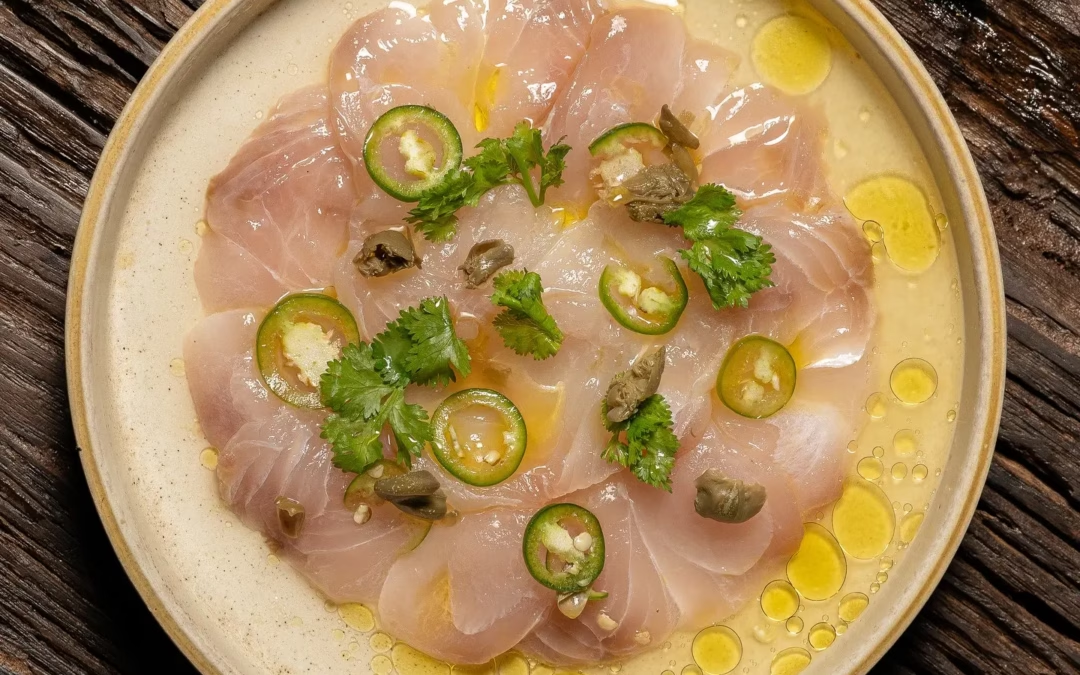Fusion Cuisine: A Culinary Adventure Blending Cultures and Flavors
In the world of culinary arts, fusion cuisine has become one of the most exciting and innovative trends. By combining ingredients, techniques, and flavors from diverse cultures, fusion cuisine pushes the boundaries of traditional cooking. Whether you’re enjoying Mexican sushi or Italian ramen, fusion cuisine offers endless possibilities for experimentation and flavor exploration.
As global travel and the exchange of culinary traditions have become more common, fusion cuisine has evolved into a style of cooking that challenges what food “should” be. This article will take you through the origins of fusion cuisine, its evolution, and why it continues to captivate food lovers around the world.
What Is Fusion Cuisine?
Fusion cuisine refers to the practice of combining elements from different culinary traditions, often resulting in innovative and unexpected flavor profiles. It blends ingredients, cooking methods, and spices from various global kitchens to create dishes that are fresh, exciting, and novel. The ultimate goal is to transcend traditional boundaries and create something unique that offers the best of both worlds—deliciously adventurous, yet accessible.
At its core, fusion cuisine is about innovation. For instance, a dish like sushi tacos merges Mexican and Japanese culinary traditions, combining the crispiness of a taco shell with the delicate flavors of sushi. Similarly, Indian pizza might blend traditional Italian crust and toppings with vibrant, spice-filled Indian flavors.
Fusion cuisine encourages chefs to think outside the box, combining the culinary practices of different cultures to offer new dining experiences.
The Origins of Fusion Cuisine
Although fusion cuisine has been widely popular in recent years, the concept isn’t entirely new. It has existed in various forms for centuries, especially as trade routes and migration brought together different culinary traditions. However, modern fusion cuisine began to take shape in the mid-20th century.
Early Influences: The Silk Road and Global Trade
Historically, the exchange of spices and cooking techniques through trade routes like the Silk Road set the foundation for fusion cuisine. The ancient trade routes between Europe, Asia, and Africa introduced ingredients from different regions, such as spices, herbs, and fruits that were integrated into local dishes.
For example, Indian spices found their way into Middle Eastern and Southeast Asian cooking, while Chinese ingredients were incorporated into Central Asian and European cuisine. These early instances of culinary blending paved the way for the more structured fusion cuisine we enjoy today.
Modern Fusion Cuisine: The 20th Century Explosion
In the mid-20th century, as globalization and immigration brought people from different backgrounds together, fusion cuisine truly began to take off. One of the earliest and most famous examples of modern fusion cuisine is the creation of the California roll, a sushi dish that substitutes traditional raw fish for avocado and crab, making it more appealing to Western diners.
As chefs from different countries began to experiment with international ingredients, the popularity of fusion cuisine grew. The 1980s and 1990s saw an explosion of fusion restaurants, particularly in metropolitan cities like New York, Los Angeles, and London, where the blending of Asian and European flavors became a hallmark of avant-garde cooking.
Characteristics of Fusion Cuisine
Fusion cuisine is characterized by the combination of ingredients, flavors, and techniques from multiple culinary traditions. Here are some common characteristics that define fusion cuisine:
1. Diverse Ingredients
One of the defining aspects of fusion cuisine is its use of diverse ingredients from various cultures. For example, you might find spicy sriracha sauce (from Thai cuisine) combined with cream cheese (a common ingredient in American cooking) in a dish. The creativity lies in how ingredients from different cuisines can complement one another.
2. Unconventional Combinations
Fusion cuisine thrives on unconventional combinations that surprise the palate. A perfect example would be miso soup with cheddar cheese—a pairing you wouldn’t find in traditional Japanese or American dishes. The goal is to create new flavors that push the boundaries of what we expect from food.
3. Global Techniques
Fusion cuisine often incorporates different cooking techniques from various cultures. For instance, you might see sushi made with a Mexican twist, where ingredients like avocado and cilantro are added, blending Japanese sushi-making techniques with Mexican flavors and garnishes.
4. Presentation and Aesthetics
Fusion dishes also often present unique and visually striking presentations, incorporating artistic plating and the use of diverse colors and textures to make dishes as much of a visual experience as they are a gastronomic one.
Fusion Cuisine Around the World
Fusion cuisine is celebrated globally, with restaurants and chefs experimenting with blending distinct culinary traditions. Here are a few popular examples of fusion dishes from around the world:
1. Mexican-Japanese Fusion: A Bold Combination
One of the most exciting fusion cuisines today is Mexican-Japanese fusion, which combines the bold flavors of Mexican cuisine with the delicate elegance of Japanese food. Think sushi with jalapeño or tacos with miso-marinated beef. TABU Supper Club in Bali, for example, offers a unique blend of these two cuisines, serving up creative dishes such as smoked salmon tacos and sushi with chili-lime salsa.
The blending of Mexican and Japanese flavors offers an explosion of freshness, spice, and umami, making it one of the most exciting trends in fusion cuisine today.
2. Indian-Italian Fusion
The combination of Indian and Italian culinary elements has also gained popularity. Indian pizza is a prime example, where Italian pizza dough is topped with spicy curry sauce, paneer (Indian cheese), and coriander. This fusion offers a perfect balance of creamy textures and bold flavors, taking the best elements of two different cuisines and combining them into a single dish.
3. Korean BBQ Tacos
Another fantastic example of fusion cuisine is the creation of Korean BBQ tacos, where the savory, grilled flavors of Korean BBQ are tucked inside a soft, warm taco shell. The dish incorporates traditional Korean flavors like gochujang (spicy red chili paste) and kimchi alongside Mexican taco elements such as tortillas and cilantro.
4. French-Vietnamese Fusion
French colonial influence in Vietnam has led to an interesting mix of French and Vietnamese culinary traditions. A well-known example is the banh mi sandwich, which combines a crispy French baguette with Vietnamese ingredients like pickled vegetables, cilantro, and grilled meats. This sandwich is a perfect fusion of French technique and Vietnamese flavors.
Why Fusion Cuisine Is So Popular
Fusion cuisine is popular for several reasons. One of the main draws is the opportunity for culinary exploration. Diners who are used to traditional dishes from a particular region can experience new flavors, textures, and presentations that are both familiar and foreign at the same time. It’s an exciting way to taste the world without leaving your city.
Additionally, fusion cuisine speaks to the growing trend of globalization. As people from different cultures come together, there is an inherent desire to blend the best parts of each culture’s food and traditions. Fusion cuisine allows this to happen seamlessly, offering an inclusive dining experience that celebrates diversity.
Conclusion: The Future of Fusion Cuisine
As fusion cuisine continues to evolve, the possibilities for creativity in the kitchen are endless. The ability to combine ingredients and techniques from different parts of the world offers endless opportunities for innovation. Whether you’re trying sushi with a Mexican twist, Indian Italian fusion, or Korean BBQ tacos, fusion cuisine represents a celebration of both global and local flavors, giving chefs the freedom to push culinary boundaries.
For food lovers, the appeal of fusion cuisine lies in the excitement of discovering unexpected combinations and enjoying unique culinary experiences that showcase the best of various cultures.
Restaurants like TABU Supper Club in Bali, with its blend of Mexican and Japanese dishes, exemplify the growing popularity of fusion cuisine, making it a must-visit spot for anyone seeking a thrilling dining experience.
Ready to experience the best of fusion cuisine? Book your table at TABU Supper Club and indulge in the perfect blend of Mexican and Japanese flavors. Don’t miss out on this unforgettable dining experience – reserve your spot today!

